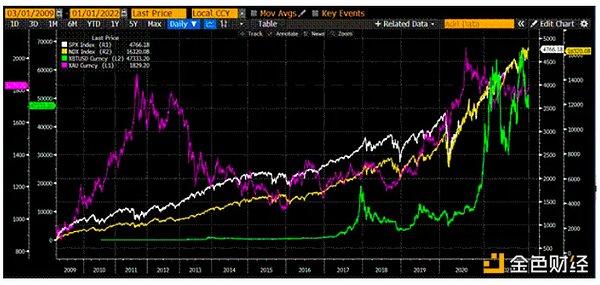In early 2025, a controversy surrounding the Solv Protocol erupted, as users accused it of not delivering on promised returns, and the escalating event sparked widespread discussions on transparency, particularly regarding the authenticity of TVL and on-chain data.
Original:Solv Protocol Drama: A Breakdown of BTCFi's First Major Controversy of 2025 (X)
Author:vivilinsv
Translated by: Bai Hua Blockchain
Cover: Photo by Shubham Dhage on Unsplash

A "scam warning" from the founder of NuBit - the first major crypto event of 2025 is unfolding in the #BTCFi domain! The turmoil surrounding @SolvProtocol has drawn widespread attention in the crypto circle.
The following is a detailed analysis of the event, including what happened, how the event escalated, and its impact on #BTCFi and the entire industry.
Disclaimer: This article only represents the objective perspective of an observer, and the author has no interest relationship with any party.
1、What happened?
Accusation: User @Clarissexx0805 accused @SolvProtocol of failing to fulfill its promised returns, claiming that she had staked 1800 BTC, and the team had originally promised her a certain return, but she ultimately only received the minimum return. Solv responded that she had not switched to the higher-yielding product as required.

Solv's Response:
@SolvProtocol responded that @Clarissexx0805 had chosen the product with the lowest return, and although she had the opportunity to switch to better options, she did not take any action. Therefore, Solv believes it did not make any mistakes.
Escalation:
The situation further escalated when the founder of @nubit_org, @trackoor, published a "scam warning" and called on users to withdraw from Solv. He drew parallels between Solv's transparency and that of @FTX_Official, and accused Solv of having a "fake TVL". This added fuel to the fire, and Solv subsequently accused him of spreading FUD messages.

2、Public Discussion
This controversy has sparked widespread reactions in the crypto community, with the most prominent being concerns about transparency.
Critics, such as @nina_rong, @BitHaHa, and @trackoor, have questioned why 1800 BTC is still held in @Clarissexx0805's wallet and counted in @SolvProtocol's TVL, raising concerns about transparency.
Supporters of Solv:
Within the crypto circle, some have also come forward to defend Solv, claiming that these accusations are "deliberately orchestrated conspiracies" aimed at spreading FUD and damaging the protocol's reputation.
Solv team refutes this as conspiracy theory: Solv co-founder @myanTokenGeek hinted that this controversy may be an intentional defamation campaign, implying that there could be an organized attack attempt targeting Solv.

Statement by @RyanChow_DeFi:
In his post, Ryan defended @SolvProtocol with the following points:
- Transparency: He reiterated that the team has maintained open communication about its operations.
- Protocol Design: Ryan explained that 1,800 BTC were pledged through a specific mechanism and calculated in the TVL according to standard DeFi operating procedures.
- Sense of Responsibility: He believes that users need to be responsible for their own fund allocation and proactively seize opportunities to pursue higher returns.

3. Personal Perspective
During the 2021 pandemic, I met @RyanChow_DeFi and @myanTokenGeek in Shanghai and have been deeply impressed by their professionalism and resilience. @myanTokenGeek (Mr. Meng) left a deep impression on me as a philosophical person, while Ryan is full of youthful vigor and determination. Over the years, the team has been able to continuously innovate in the market cycle, which is very admirable.
1) Responding to Allegations
The current situation highlights the complexity of disputes in the DeFi field. Here are a few key points worth deeper consideration:
Unclear Transaction Terms: The details of the agreement between @Clarisse and Solv were rather vague. Essentially, it's a "he said, she said" situation, making it difficult to clearly define the responsibilities and commitments of both parties.
Dispute Focus: The Issue of Returns Clarisse's allegations focused on the unrealized returns. If the Solv team's explanation is true, that she did not choose to redirect her BTC to higher-yielding products, then the main responsibility should lie with her. But there is also a key question: Should Solv have proactively reminded or helped an important user to maximize returns? Especially in a model that combines centralized and decentralized elements, a friendly reminder could have prevented this storm.
Solv's Response: The Solv team's response was prompt and well-organized, demonstrating strong crisis management capabilities, providing the crypto industry with an example of how to respond to crises.
Transparency Issue: @trackoor, the founder of @nubit_org, raised reasonable concerns about on-chain transparency. If the protocol could more clearly disclose its operational methods and data reporting, it would help build trust and avoid similar disputes.
Potential Manipulation: Yan Meng's suggestion that Solv may have encountered a larger conspiracy is intriguing but unverifiable. As an observer, we can only speculate. For retail investors, this again emphasizes the importance of fairness and transparency in the ecosystem.
Broad Impact on BTCFi and Transparency: Currently, BTCFi has not yet achieved widespread application, and the growth in this field in 2024 is relatively flat. Originally, @SolvProtocol was seen as a positive force driving the development of this field in 2025, but this storm may slow down this momentum.
Impact on BTCFi: Similar disputes may undermine trust in emerging fields. If not handled properly, it may hinder the participation of institutions and retail investors, thereby affecting the development of BTCFi.
Demand for Transparency: This field urgently needs clearer transparency standards. Protocols should take measures to ensure that users can clearly understand the risks, returns, and mechanisms of their investments. Clearer on-chain reporting and user education will help reduce similar disputes in the future.
2) Lessons for the Industry
This incident has brought several important lessons for the industry:
- Proactively communicate with high-value users.
- Transparently report TVL and other key metrics.
- Establish a clear dispute resolution mechanism.
3) Summary and Reflection
As an observer, I believe this storm has reminded us of the growing pains of the crypto industry. The allegations and rebuttals have revealed systemic issues, but also provide opportunities for the industry's development. BTCFi has tremendous potential, but its success is key to building trust through fair, transparent, and user-centric practices. I hope the lessons learned from this dispute can promote positive changes in @SolvProtocol and the entire crypto ecosystem.
Disclaimer: As a blockchain information platform, the articles published on this site represent the personal views of the authors and guests, and are not related to the stance of Web3Caff. The information in the articles is for reference only and does not constitute any investment advice or offer, and please comply with the relevant laws and regulations of your country or region.
Welcome to join the official Web3Caff community: X(Twitter) account | WeChat reader group | WeChat public account | Telegram subscription group | Telegram discussion group






